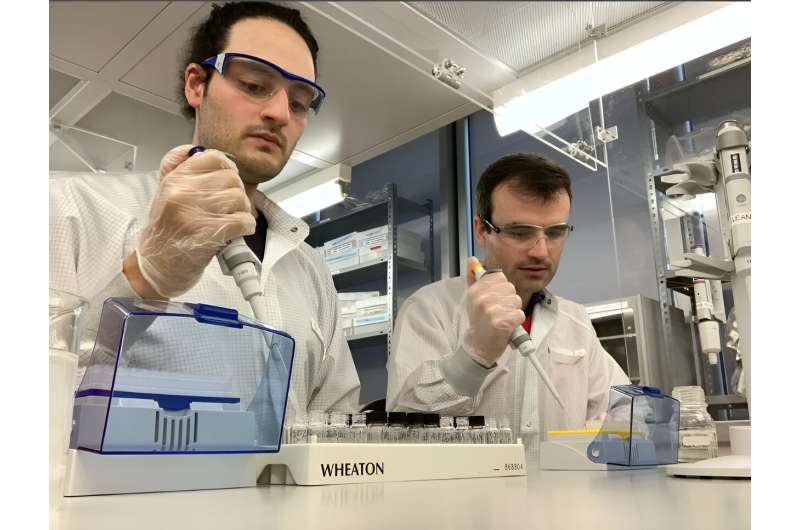This article has been reviewed according to Science X's editorial process and policies. Editors have highlighted the following attributes while ensuring the content's credibility:
fact-checked
peer-reviewed publication
trusted source
proofread
Study finds oxygen rise in the tropical upper ocean during the Paleocene-Eocene Thermal Maximum

Oxygen is fundamental to sustaining life on Earth. The ocean gets its oxygen from its uppermost layers in contact with the atmosphere. As our planet continues to warm, the ocean is gradually losing its capacity to absorb oxygen, with severe consequences on marine ecosystems and human activities that depend on them. While these trends will likely continue in the future, it remains unclear how ocean oxygen will redistribute across the ocean interior, where ocean currents and biological degradation of biomass dominate over atmospheric diffusion.
"Marine sediments are the history book of the ocean. By studying past intervals of time in which temperatures increased rapidly, we can gain precious insights on how ocean oxygen and biology responded to changes in climate," said Simone Moretti, who is the lead author of a study appearing in Science.
Using a combination of chemical and morphological measurements on foraminifera, microscopic fossils preserved in marine sediments over millions of years, a team of researchers led by scientists at the Max Planck Institute for Chemistry in collaboration with Princeton University has reconstructed the response of tropical ocean oxygenation during the Paleocene-Eocene Thermal Maximum (PETM).
Nitrogen isotopes and fossil size reveal the oxygen content of seawater
Nitrogen isotopes preserved within fossil foraminifera enabled the scientists to track past changes in column denitrification in the water. This process, in which nitrate is converted to molecular nitrogen (N2) by bacteria, only occurs within the most oxygen-depleted waters of the ocean: the oxygen-deficient zones.
"Our measurements showed that contrary to most expectations, denitrification decreased during the PETM, implying that the oxygen-deficient zones of the ocean contracted during this interval of abrupt global warming," said Alfredo Martínez-García, head of the laboratory at MPIC where the study was conducted.

In addition, the size of foraminifera fossils proved to be a fundamental piece of the puzzle. Models that describe the metabolism of marine organisms allow to link their body size to the environmental temperature and oxygen content of the water they live in. A reduction in body size is an effective adaptation to a warming climate, as it allows organisms to reduce their metabolism in times of stress.
"Remarkably, and unexpectedly, evidence shows that planktonic foraminifera from the central tropical Pacific got bigger during the PETM warming, implying a tropical oxygen rise in the upper layers of the ocean," commented Curtis Deutsch, Professor of Geosciences at the University of Princeton, who co-authored this study. Planktonic foraminifera live in the upper layers of the ocean, in contrast to those found on the bottom.
Oxygen increase could have mitigated mass extinction in the upper ocean
The finding that oxygen levels in the tropical ocean increased rather than decreased during the PETM warming also provides the researchers with a clue to another puzzle, that of changes in marine biodiversity. The PETM was the largest extinction event among deep ocean organisms within the Cenozoic Era, spanning the past 66 million years. One of many mysteries linked to the PETM is that while this large extinction event unfolded at greater depths, organisms living in the uppermost part of the ocean were less affected.
"The transient tropical oxygenation revealed by our study may have contributed to preserving habitability despite a large temperature stress," said Moretti. "However, during the PETM the fauna in the surface ocean was nonetheless heavily impacted, and it took more than one hundred thousand years for these ecosystems to recover towards their original state, an eternity in human-civilization timescales."
More information: Simone Moretti et al, Oxygen rise in the tropical upper ocean during the Paleocene-Eocene Thermal Maximum, Science (2024). DOI: 10.1126/science.adh4893
Journal information: Science
Provided by Max Planck Society




















